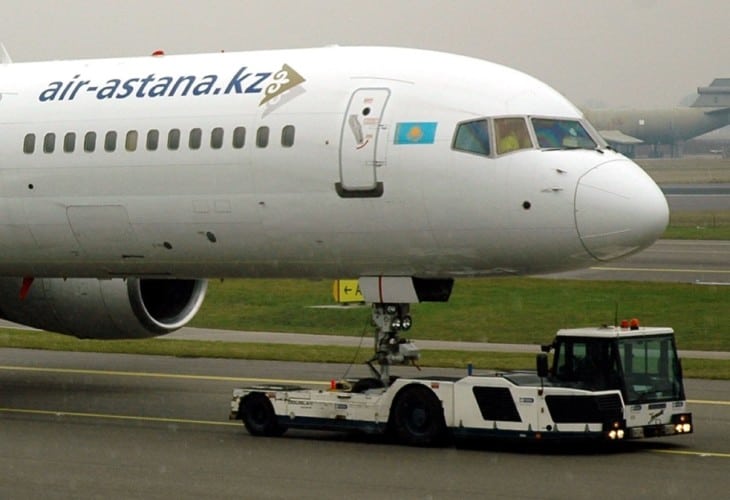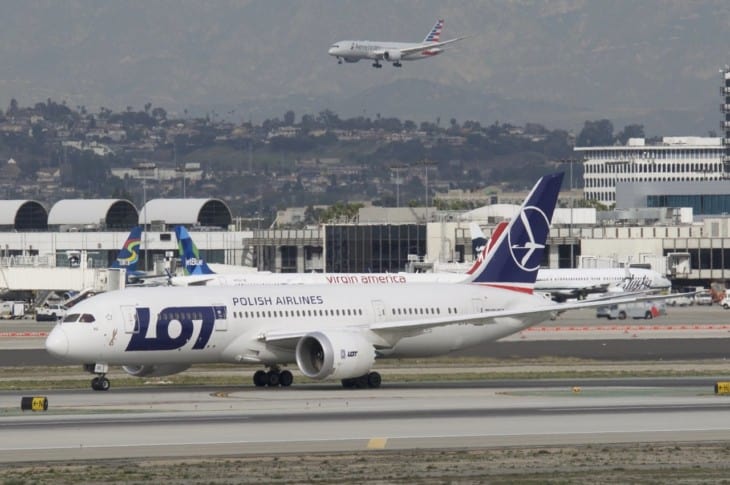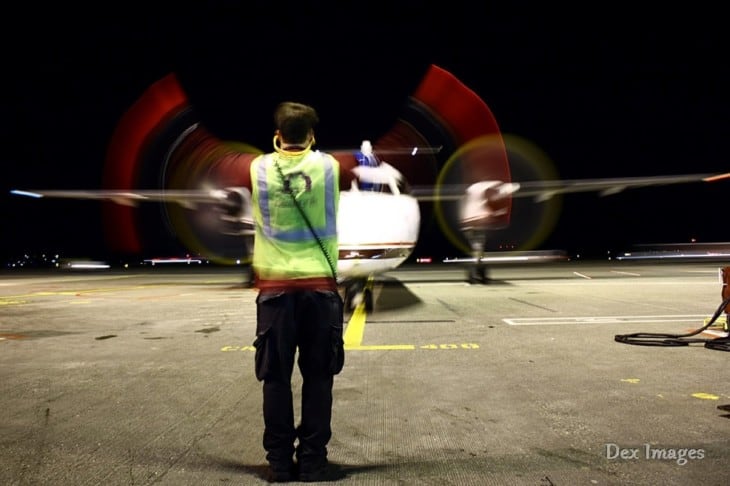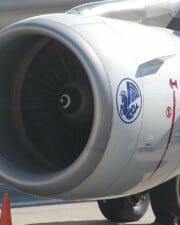Modern airports are massive places with a confusing maze of taxiways. Some airports are really congested and pilots have to be extra careful while taxiing around. Thankfully, pilots have several aids to help them navigate ranging from taxiway lighting and signs to high-tech solutions such as moving map displays.
Table of Contents
If an aircraft is moving by using the power of its engines then that movement is called taxiing, whereas if an aircraft is being moved without any help from its engines, it’s either being towed or pushed back.
In this article, we will have a look at some ways an aircraft can be moved around on the ground.
How Aircraft Move on the Ground
Tugs
Tugs are special, low-profile utility vehicles used to either tow an aircraft or to push them back from the terminal or remote parking stand. Most tugs utilize wide tires to provide excellent grip which is essential during push-back or towing operations. There are two main types of tugs: conventional and towbarless.
Conventional

Conventional tugs employ the use of a tow-bar which is attached to the nose wheel of the aircraft before pushback. The tow-bar acts as a giant lever and helps to rotate the nose wheel.
Towbarless

On the other hand, towbarless tugs use a hydraulic lifting mechanism to scoop up the nose wheel of the aircraft and then push it back. Towbarless tugs are preferred due to their simplicity and because they provide more precise control of the aircraft during towing and pushback operations.
Before pushback, the pilot obtains pushback and startup clearance and informs the ground crew via headset regarding the pushback instructions. The ground crew then inserts a bypass pin into the nose wheel which disconnects the aircraft’s nose wheel steering mechanism. The tug then lifts the nose wheel of the aircraft or the ground crew connects the tow-bar if the tug is equipped with a tow-bar. The pilot is then asked to release the parking brake and the pushback operation commences.
Once the pushback operation is completed, the ground crew disconnects the tow-bar and removes the bypass pin thus handing over steering control to the pilots. The bypass pin is shown to the pilot and the pushback operation is completed. The aircraft can then taxi forwards using its engines.
Tugs are also the preferred method of relocating aircraft where taxiing the aircraft is not practicable or is deemed unsafe such as moving powered down aircraft or moving aircraft into and out of maintenance hangars.
Engines
Once the pushback has been completed, the aircraft can move under its own power. Normally, the engines provide the thrust for the aircraft to move around and that is called taxiing. The aircraft’s engines are started either during pushback or after pushback and only after informing the ground crew of the starting sequence.
Pilots have to be extra cautious while adding power to get the aircraft to start moving initially. There have been many instances of unsuspecting ground crew and ground equipment being hit by jet blast. In some unfortunate instances, the ground crew have also been ingested into the engine as a result of a communication breakdown between the pilots and ground crew.
For larger aircraft, directional control during taxiing is provided by either the rudder or nose wheel steering using the tiller. In some cases, differential braking or differential thrust may also be used. The tiller provides excellent steering capability at low speeds whereas at high speeds the rudder is used once there is sufficient airflow to provide directional control.

Some military transport aircraft such as the C-130 Hercules and C-17 Globe Master use reverse thrust for push-back operations. This kind of maneuver is called power back. During power-back operations, the thrust that is normally directed towards the rear is redirected towards the front thus providing a force that moves the aircraft backward.
However, most commercial aircraft do not use their engines for push-back operations due to noise concerns and high risk of foreign object ingestion which would cause severe damage to the engines.
Some airlines mandate that crews perform the taxi out / taxi in on one engine to reduce carbon emissions and save fuel costs.
Tow-bars / Manual Repositioning
Light aircraft / general aviation aircraft such as Diamond DA-42s and Cessna’s often do not require tugs for repositioning, instead, they can be repositioned manually or using lightweight aluminum tow-bars that can be easily connected to the nose gear and can be operated by a single person.
Other Aids to Help Aircraft Move On the Ground
Moving Map Displays
International airports have a maze of taxiways that can be difficult to navigate even in the daytime by an experienced pilot, let alone a pilot who is new to that particular airport. The risk of making a wrong turn, getting lost, and unintentionally entering the runway environment is very high.
Modern aircraft such as the Boeing 787 and Airbus A350 incorporate moving map displays which aid the pilot greatly by increasing their situational awareness during low visibility operations and decreases the chance of runway incursions and pilots getting lost during taxiing at large airports.
Moving map displays also help pilots in determining their location at an airport. Think of moving map displays as the GPS in your car. It allows the pilot to taxi from the apron to the runway with greater precision and situational awareness.
Older aircraft often used a paper airport diagram but it is very susceptible to misinterpretation and could end up with the crew getting lost or worse, inadvertently entering an active runway that is being used for take-offs and landings thus, increasing the chance of an accident/incident.
Airport lighting
During night or low visibility operations, airport lighting helps pilots in taxiing their aircraft from the apron to the runway. Taxiways are often illuminated by omnidirectional steady green centerline lights and the taxiway edges are defined by omnidirectional steady blue lights.
Runway lighting differs significantly from taxiway lighting. Runway edges are white, except on instrument runways, where yellow lights replace the last 2000 feet to form a caution zone.
Runway centerline lights are white until the last 3000 feet where they alternate between red and white till 2000 feet and the last 1000 feet are signified by red centerline lights.
Airport Signage / Markings
Airport signage provides a visual cue to pilots and helps them move around the airport during day, night, and low visibility operations.

During the daytime, taxiway centerlines can be identified by a single solid yellow line with a width of 6 to 12 inches. Taxiway edge markings are usually represented by a continuous double yellow line. These markings indicate that the area beyond these lines is not suitable for taxiing.
At some airports, enhanced taxiway markings are used. Enhanced taxiway markings consist of parallel dashed lines along both sides of the normal centerline. The main purpose of these enhanced taxiway markings is to alert pilots that they are approaching a holding point and should be ready to stop the aircraft.
Runway markings differ significantly with runway edges delineated by a continuous solid white line on each side of the runway. Runway centerline markings consist of uniformly placed stripes and gaps.
Taxiway locations and directions are not only placed beside the taxiway but also on the taxiway surface. A black inscription on a yellow background represents directional signs whereas a yellow inscription on a black background represents the current position. A white inscription on a red background denotes mandatory signs that convey important information to the crew.
Docking Systems / Marshallers

After landing, pilots still have to park the aircraft at the designated parking spot. Most parking stands are equipped with docking systems that use 3D scanning to determine the type of aircraft that is entering the parking spot.
Lasers provide a highly accurate distance reading to the pilots. The docking system then guides the pilots laterally and tells them where to stop so that the jet bridge may be connected.
If the system detects an obstacle or is unable to provide accurate docking information it will instruct the pilots to stop. In that case, a marshaller may be used to complete the docking process.
A marshaller is a person who is given the responsibility to guide the aircraft into a parking spot using standard signals. Marshaling is usually done with hands or using lighted wands at night.
Next: Remote-Controlled Electric Tugs?
In the future, semi-robotic tugs will be used for pushback operations that will be controlled by the pilots. Already, remote-controlled electric tugs are in operation at some major airports. The major advantage of electric tugs over traditional tugs is that they reduce carbon emissions and offer greater fuel savings.
Also, electric tugs can be used in enclosed spaces such as hangars without the fear of carbon monoxide poisoning.
Airbus was also working on a feature that will allow aircraft to taxi automatically around major airports along with an auto take-off function. The tests concluded in 2020 with favorable results.
Related Posts







